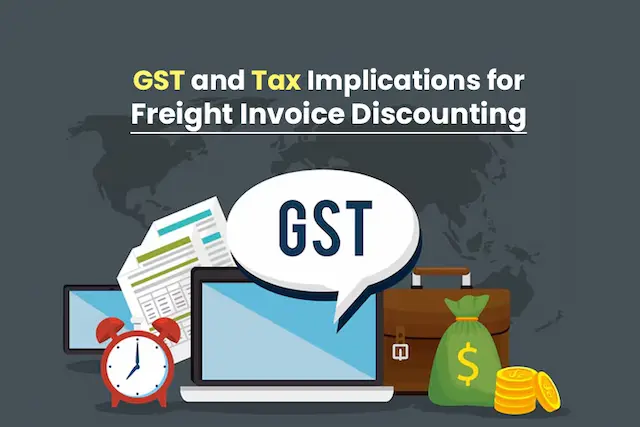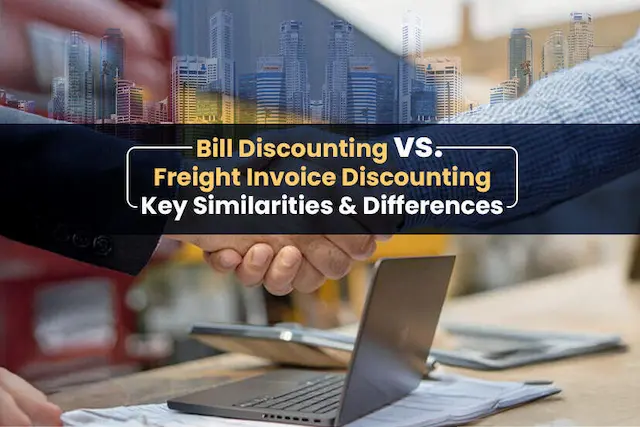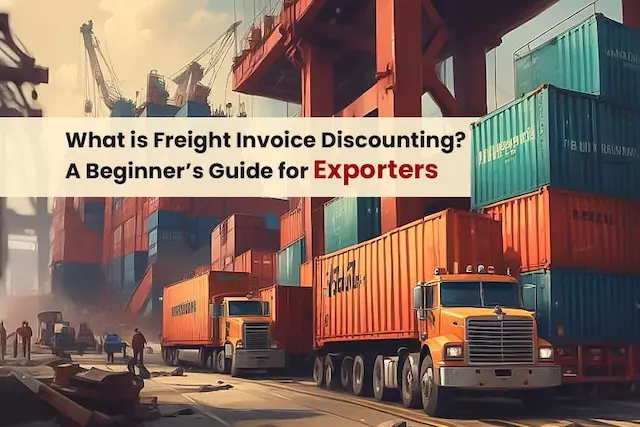Promotions, and more specifically, discounts, are one of the key competitive weapons in the marketing and selling process. It can promote the client base, increase revenues, and improve customer satisfaction and repeat patronage. But there are two important things that are essential and worth pointing out about discounts. The two most well-known types of discounts comprise static and dynamic discounts, and both have their advantages and disadvantages. In this detailed blog, we will explore what these discounts are, the benefits and drawbacks that can come with them as well as how companies can beneficially apply the freight discounts.
What Are Static Discounts?
Such endless discounts are permanent price cuts, which are always applicable at any time throughout the year. Some common strategic selling price adjustments include the following: a) Price discounts which are determined once and do not change with fluctuations such as demand which may be high or low, customers’ buying behavior or even time at which the product is bought. They include; ; Promotional offers such as Christmas sale, New year sale, clearance sale among others.
Benefits of Static Discounts
Static discounts establish a set price reduction that is tied to payments made within a specific number of days. Since the figures in this format are rigid, calculating the appropriate discount is straightforward. Apart from this, there are various other benefits, let’s know:
Simplicity and Predictability:
This type of discount is relatively difficult to compute and keep track of but it is easily understood. This is especially effective because both the businesses and the customers are fully aware of what is expected from each other, which can make the purchase process rather smooth. For instance, a store planning to display a 20% markdown on all articles on this Black Friday has a well-defined and known motivation to the buyers.
Enhanced Customer Trust:
As it is clear that the setting of the static discounts does not involve introduction of complex concepts to the clients, it may assist in establishing trust with the customers. All the information is honest and clear with no gimmicks, which can also improve the customers’ experience in shopping. It’s essential to note that having consistent policies when it comes to discounting helps the company attract more customers by having their back by telling them the truth about the price cut.
Easier Marketing Campaigns:
Static discounts can be beneficial as they keep the marketing campaigns more simple and easy to comprehend. It becomes easier for businessmen to undertake their promotions way ahead of time with no compromise on the different channels of communication they may have to use. For instance, a resellers’ holiday special where the pricing is already set can be promoted before the holiday season through the use of effective marketing materials.
Drawbacks of Static Discounts
Lack of flexibility to adapt to changing market conditions, potentially leading to over-discounting and reduced profit margins. Below are some of the drawbacks of static discounts:
Lack of Flexibility:
One of the key issues with static discounts is that the means during which they are offered cannot be changed. They only take place within the internal environment without consideration of external environments such as the market forces or customer behavior. Also, if the customers suddenly appear or disappear, this fixed discount remains the same which could be a potential loss in sales or untapped potential.
Potential for Over-Discounting:
It tends to result in over-promotion of discounts where companies cut the price lower than what is needed to attract a relevant audience. They can reduce profitability and depreciate the very notion of value – worth – and thereby price.
Limited Customer Engagement:
Such a stratagem does not actively involve customers as it is employed in a fixed manner. However, they are depleted in friendly and close touch, which is always good for customers to make them feel important. Thus, it may be that in conditions of the increasing significance of the personalization function in the market, a static discount can be insufficient.
What Are Dynamic Discounts?
Dynamic discounts on the other hand are usually variable and its components may include price policy or price determined by the frequency within a certain period of time, seasonality, consumer behavior and inventory. Such reductions are normally based on complex analysis of consumer data and modern technologies; thus, businesses are in a position to provide specific discounts within a short span of time.
Benefits of Dynamic Discounts
Dynamic discounts are determined on a per-invoice basis. It also allows your business to prioritize when and how it offers discounts to optimize cash flow without eating into revenue. Below are some of its advantages:
Increased Revenue Potential:
It means that through implementing product and service prices based on demand factors and other factors, capacities of the businesses can increase their production revenues. For instance, during Christmas rush or other holiday seasons, a business entity might be willing to offer small rebates because demand is already high hence the need to compel people to buy its products; during other low-sell ing times though, a business can offer bigger rebates to be able to increase traffic to its stores.
Enhanced Customer Personalization:
It is a way to offer flexibility in pricing because prices can be adjusted based on certain factors. It is easy for businesses to set different discounts for different customers depending on the amount that a given customer used to buy products or services, frequency, and other attributes. This can go a long way to improving customer satisfaction, especially customers who are captured in the database.
Better Inventory Management:
Dynamic discounting this benefits the companies since it is easy to track the inventory as means of managing it effectively. There are cases where some products will be reluctant to be purchased in the market; therefore, the discount rates for such products can be adjusted in a way that they will be sold faster than they are produced to ensure minimal storing cost.
Competitive Advantage:
In such a competitive world, always changing the prices of commodities can be useful for business especially when using dynamic discounts. Business can quickly adapt to the changing price strategies of competitors and the conditions in the market place which is always helpful in any business especially to price sensitive customers.
Drawbacks of Dynamic Discounts
Dynamic Discounts are complex and have higher implementation costs, with a risk of confusing customers and sparking price wars. Besides this, there are various other drawbacks. Read on to know more:
Complexity and Implementation Costs:
You see, dynamic discounts cannot be undertaken lightly and they definitely need efficient technology and professional support. The inherent techniques and data fundamentals involved in algorithms and data analytics can take time and money to construct and sustain. The latter may be especially difficult for small businesses to overcome that don’t have a dedicated IT department.
Potential for Customer Confusion:
Furthermore, while implementing dynamic pricing can present benefits, it can at the same time cause some problems such as: getting the curse of notice frequent change in price which can sometimes be daunting for the consumer. This is even more dangerous and likely to cause mistrust and dissatisfaction whenever customers expect to be charged far more than others.
Risk of Price Wars:
In a competitive business environment, dynamic discounts are likely to result in a low price competition that is characterized by firms attempting to gain a large market share all the time through offering lower prices than their rivals. This is advantageous to the consumers because they can instantly acquire products at relatively lower prices but not advantageous for businesses as it reduces profit margins and economic sustainability in the future.
Real-World Examples and Recent Data
Static Discounts: Case Study
Of all the forms of discounts, you can easily describe, an example of static discounts is the annual black Friday sale. Black Friday 2023 was unprecedented, in terms of sales, with an increase in overall spending amounting to $9 for the U. S. retailers overall. of whom there are 8 billion online alone as per Adobe Analytics. This is a predictable yearly event which forces customers to wait for the same discounted offers to begin shopping.
Dynamic Discounts: Case Study
Another great example is Amazon which employs dynamic pricing as one of its fundamental mechanisms for stock price fluctuation with remarkable success. Amazon implements complex mechanisms of repricing that are frequently updated to reflect current demand, competitor’s price levels and other variables. It has especially been instrumental in making Amazon the unrivaled leader in the e-commerce business. The estimated net sales of Amazon for the year 2023 were up to $469. 8 billion, which are also very revealing to prove the viability of offering dynamic discounting to the customers to boost their sales and the growth of a business.
Strategies for Implementing Discounts Effectively
While the static discount option appears to be very effective with broad primary objectives, the dynamic discount option also has its role in a sound pricing strategy. Here are some strategies to leverage these discounts effectively:
Combining Static and Dynamic Discounts
- Seasonal Promotions with Dynamic Adjustments: The idea is that businesses can combine predictable but insignificant, the season static discounts, with variable ones. For instance, in festive seasons, base pricing can be reduced, with further extra dynamic discount reflecting real-time store inventory and customer traffic.
- Segmented Dynamic Discounts: While adopting dynamic discounts, aim only at special customers’ segments, and keep offering static discount options for all the other clients. It means that businesses can give customers individual discounts without placing all of them on a fixed, continual round of absolutely identical looking offers that change frequently.
Leveraging Data and Technology
- Invest in Advanced Analytics: For dynamic discount, the firms involved should have efficient data analysis systems for the system to work efficiently. Access to something as fundamental as real-time customer behavior analysis, market trends, competitor pricing, etc. , requires an investment in appropriate technologies.
- Machine Learning Algorithms: Develop and apply machine learning algorithms to determine what optimal discount rates need to look like. These algorithms would be able to adapt to new information and hence ensure that discount strategies that are being implemented are the most profitable and satisfactory to the consumer continually.
Maintaining Customer Trust
- Transparency in Pricing: In both cases, it is crucial not to obscure the process of applying a discount and maintaining as much sincerity and clarity as possible. One of the suggestions that we have is to make sure that the customers understand why the pricing has changed and what they are gaining from the changes.
- Consistent Value Proposition: Make sure that whatever combined value proposition there is must not be inconsistent. The price reduction can be permanent or timely, but it has to make the customer feel that he or she is receiving a good deal in the process.
Also Read: What is the Difference Between Export Factoring and Invoice Discounting?
Conclusion
Both the static and dynamic discount policies have advantages and disadvantages appealing to the different needs of many consumers. Static discounts are easy, easy to manage and permanently acceptable for wide-scale promotional campaigns like feedback sales promotions and for customer trust promotion. Variable price promotional schemes as they are, their more appealing characteristic which is easy on the changes and offers, can increase revenue, improve customer satisfaction, and mitigate competition threats.
Owing to the dynamics of the market, stakeholders need to remain flexible in order to adapt to the challenges arising from economic fluctuations. Static discounts on the other hand can be used when steady marketing is expected throughout the stipulated time to give a client’s breakthrough needed purchase.
Also Read: How to Incorporate Invoice Discounting into Your Financial Strategy?




